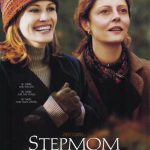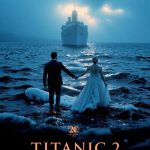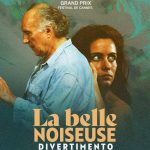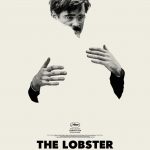The Time Traveler’s Wife (2009)
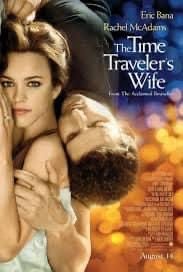
Based on Audrey Niffenegger’s best-selling novel, The Time Traveler’s Wife (2009), directed by Robert Schwentke, is a science fiction romance that blends the complexities of time travel with the emotional depths of love and human connection. Starring Eric Bana and Rachel McAdams, the film tells the story of Clare (McAdams) and Henry (Bana), whose unconventional love story is shaped by his uncontrollable time travel.
Suggested videos for you:
Plot Overview
The film follows Clare, a woman who has known her husband, Henry, in different stages of his life due to his spontaneous ability to travel through time. Henry is affected by a genetic disorder that causes him to involuntarily leap between different points in his life. As a result, Clare meets Henry at various ages, including when he first appears in her life as a time traveler, and later, when they are married.
As their relationship progresses, Clare and Henry must navigate the trials and tribulations of love and loss, including the challenges that arise when one’s partner is constantly vanishing into different moments of time. The film spans several years and explores how their love endures despite the obstacles created by Henry’s unpredictable time traveling.
Themes and Emotional Resonance
At its core, The Time Traveler’s Wife is a meditation on the nature of love, fate, and the passage of time. The film beautifully captures the fragility of relationships, showing how love can remain steadfast despite seemingly insurmountable challenges. Henry’s time traveling is a metaphor for the passage of time itself—always fleeting, uncontrollable, and filled with moments that can be both joyous and painful.
The movie also delves into the themes of memory and longing. Clare is faced with the loneliness that comes with loving someone whose presence is never guaranteed, and Henry must cope with the burden of knowing that he will be separated from Clare at unpredictable moments. The deep emotional connection between the characters, compounded by the devastating reality of Henry’s condition, adds layers of heartbreak and poignancy to their love story.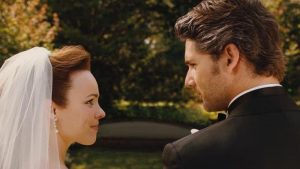
Characters and Performances
1.Clare (Rachel McAdams): McAdams delivers a performance that is both tender and strong, capturing the complexity of Clare’s character as she navigates her love for Henry while dealing with the uncertainties of his time traveling. The character’s vulnerability is apparent, but McAdams also portrays Clare’s strength in coping with her emotional isolation.
2.Henry (Eric Bana): Bana brings depth to the role of Henry, a man who is both burdened and blessed by his ability to time travel. His portrayal of a man in love yet struggling with the limitations of his condition is moving, and he successfully conveys the character’s internal conflict.
3.Supporting Cast: The supporting characters, including Clare’s family and Henry’s friends, add richness to the story. Their relationships with the main characters help highlight the emotional complexity of Clare and Henry’s bond.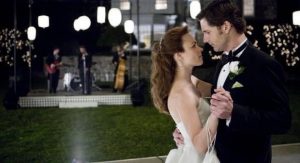
Direction and Pacing
Schwentke’s direction is effective in balancing the intricate time travel concept with the emotional beats of the narrative. The film’s pacing, however, can feel uneven at times, particularly for those unfamiliar with the novel. The jumps between time periods, though essential to the plot, may be disorienting for some viewers. However, the emotional resonance of the love story anchors the film, ensuring that it remains compelling despite the complex structure.
Visuals and Cinematography
The cinematography in The Time Traveler’s Wife is lush and atmospheric, with the use of lighting and framing underscoring the film’s emotional tone. The scenes that depict Henry’s time traveling are seamlessly integrated into the narrative, and the film makes effective use of visual transitions to depict his jumps between time periods. The juxtaposition of past and present in Henry and Clare’s relationship is beautifully handled, giving the film a dreamlike quality.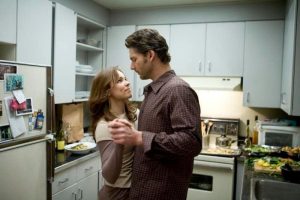
Music and Score
The film’s score, composed by Mychael Danna, complements its emotional depth, with its wistful and melancholic melodies evoking the passage of time and the bittersweet nature of love. The music enhances the poignancy of key moments, from tender scenes of intimacy to moments of heartbreak.
Criticisms
While The Time Traveler’s Wife succeeds in its emotional storytelling, some critics have noted that the pacing can be confusing, particularly for viewers unfamiliar with the source material. The nonlinear structure may leave some audiences disoriented, and certain aspects of the time travel mechanics are left unexplained.
Additionally, the film’s reliance on time travel as a plot device can at times feel overly complex, and the constant shifts between time periods may dilute the emotional weight of some scenes.
Conclusion
The Time Traveler’s Wife is a unique and emotionally resonant love story that explores the complexities of time, memory, and human connection. Though its nonlinear structure and time travel elements may confuse some viewers, the film’s heart lies in its portrayal of an enduring love that transcends time. With strong performances from Rachel McAdams and Eric Bana, as well as a hauntingly beautiful score, The Time Traveler’s Wife offers a poignant and bittersweet reflection on the passage of time and the way love endures, even in the face of life’s most profound challenges.
The Time Traveler’s Wife (2009): A Heartfelt Exploration of Love, Loss, and Fate
Based on Audrey Niffenegger’s best-selling novel, The Time Traveler’s Wife (2009), directed by Robert Schwentke, is a science fiction romance that blends the complexities of time travel with the emotional depths of love and human connection. Starring Eric Bana and Rachel McAdams, the film tells the story of Clare (McAdams) and Henry (Bana), whose unconventional love story is shaped by his uncontrollable time travel.
Plot Overview
The film follows Clare, a woman who has known her husband, Henry, in different stages of his life due to his spontaneous ability to travel through time. Henry is affected by a genetic disorder that causes him to involuntarily leap between different points in his life. As a result, Clare meets Henry at various ages, including when he first appears in her life as a time traveler, and later, when they are married.
As their relationship progresses, Clare and Henry must navigate the trials and tribulations of love and loss, including the challenges that arise when one’s partner is constantly vanishing into different moments of time. The film spans several years and explores how their love endures despite the obstacles created by Henry’s unpredictable time traveling.
Themes and Emotional Resonance
At its core, The Time Traveler’s Wife is a meditation on the nature of love, fate, and the passage of time. The film beautifully captures the fragility of relationships, showing how love can remain steadfast despite seemingly insurmountable challenges. Henry’s time traveling is a metaphor for the passage of time itself—always fleeting, uncontrollable, and filled with moments that can be both joyous and painful.
The movie also delves into the themes of memory and longing. Clare is faced with the loneliness that comes with loving someone whose presence is never guaranteed, and Henry must cope with the burden of knowing that he will be separated from Clare at unpredictable moments. The deep emotional connection between the characters, compounded by the devastating reality of Henry’s condition, adds layers of heartbreak and poignancy to their love story.
Characters and Performances
1.Clare (Rachel McAdams): McAdams delivers a performance that is both tender and strong, capturing the complexity of Clare’s character as she navigates her love for Henry while dealing with the uncertainties of his time traveling. The character’s vulnerability is apparent, but McAdams also portrays Clare’s strength in coping with her emotional isolation.
2.Henry (Eric Bana): Bana brings depth to the role of Henry, a man who is both burdened and blessed by his ability to time travel. His portrayal of a man in love yet struggling with the limitations of his condition is moving, and he successfully conveys the character’s internal conflict.
3.Supporting Cast: The supporting characters, including Clare’s family and Henry’s friends, add richness to the story. Their relationships with the main characters help highlight the emotional complexity of Clare and Henry’s bond.
Direction and Pacing
Schwentke’s direction is effective in balancing the intricate time travel concept with the emotional beats of the narrative. The film’s pacing, however, can feel uneven at times, particularly for those unfamiliar with the novel. The jumps between time periods, though essential to the plot, may be disorienting for some viewers. However, the emotional resonance of the love story anchors the film, ensuring that it remains compelling despite the complex structure.
Visuals and Cinematography
The cinematography in The Time Traveler’s Wife is lush and atmospheric, with the use of lighting and framing underscoring the film’s emotional tone. The scenes that depict Henry’s time traveling are seamlessly integrated into the narrative, and the film makes effective use of visual transitions to depict his jumps between time periods. The juxtaposition of past and present in Henry and Clare’s relationship is beautifully handled, giving the film a dreamlike quality.
Music and Score
The film’s score, composed by Mychael Danna, complements its emotional depth, with its wistful and melancholic melodies evoking the passage of time and the bittersweet nature of love. The music enhances the poignancy of key moments, from tender scenes of intimacy to moments of heartbreak.
Strengths
1.Emotional Depth: The film’s exploration of love, loss, and the passage of time resonates deeply, creating a heartfelt connection with the audience.
2.Strong Performances: Both Rachel McAdams and Eric Bana give strong, nuanced performances that capture the complexity of their characters’ relationship.
3.Unique Concept: The blending of time travel with a love story is fresh and intriguing, offering a new perspective on the genre.
4.Visually Striking: The film’s cinematography and use of visual effects to depict time travel are well-executed, contributing to the story’s dreamlike atmosphere.
Criticisms
While The Time Traveler’s Wife succeeds in its emotional storytelling, some critics have noted that the pacing can be confusing, particularly for viewers unfamiliar with the source material. The nonlinear structure may leave some audiences disoriented, and certain aspects of the time travel mechanics are left unexplained.
Additionally, the film’s reliance on time travel as a plot device can at times feel overly complex, and the constant shifts between time periods may dilute the emotional weight of some scenes.
Conclusion
The Time Traveler’s Wife is a unique and emotionally resonant love story that explores the complexities of time, memory, and human connection. Though its nonlinear structure and time travel elements may confuse some viewers, the film’s heart lies in its portrayal of an enduring love that transcends time. With strong performances from Rachel McAdams and Eric Bana, as well as a hauntingly beautiful score, The Time Traveler’s Wife offers a poignant and bittersweet reflection on the passage of time and the way love endures, even in the face of life’s most profound challenges.
